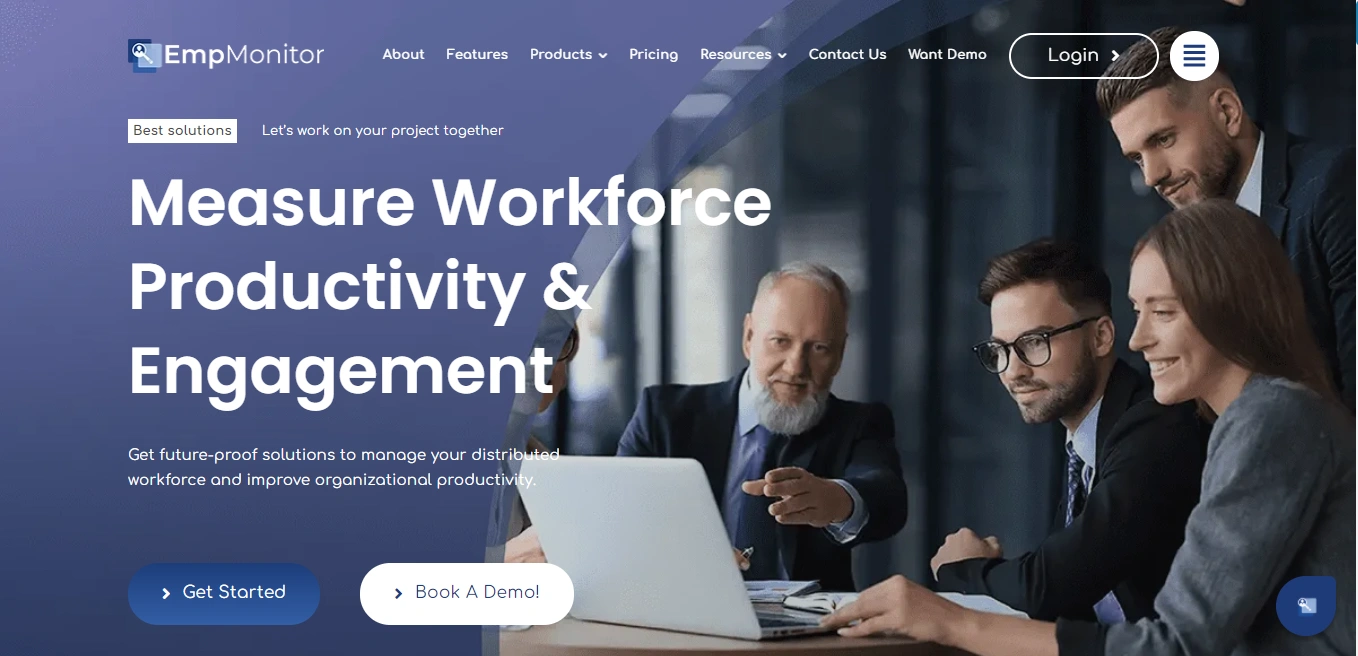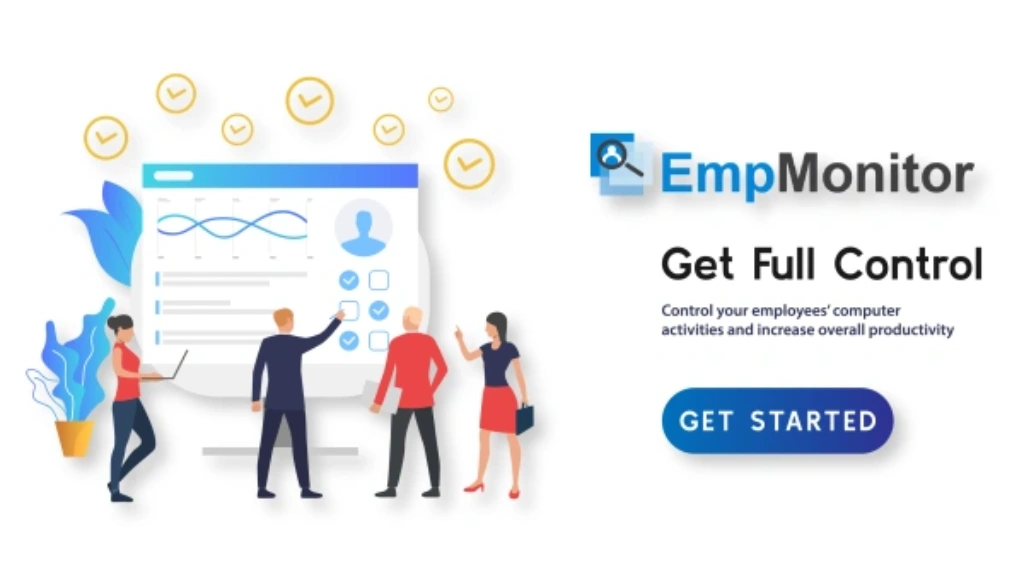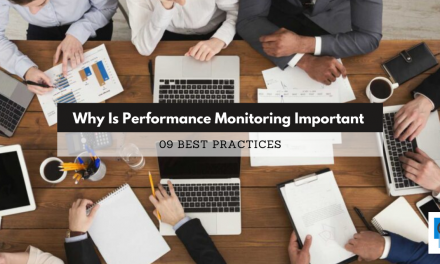A workplace should feel like a space where people can grow without carrying the weight of constant tension. Yet many teams today struggle with quiet burnout, unfinished conversations, and workloads that seem to never settle. That’s why more leaders and employees are focusing on how to create a stress free work environment that supports both well-being and productivity.
The idea isn’t about removing pressure completely. It’s about shaping a culture where people can do meaningful work without sacrificing their mental peace. As you read further, you’ll see how each part of a healthy workplace connects to the next, building a smooth path toward a calmer, more productive atmosphere. And the real shift starts by understanding what causes stress in the first place.
In a hurry? Listen to the blog instead!
What Drives Workplace Stress?

Many employees deal with long task lists, frequent interruptions, and last-minute requests. When priorities change too often, people struggle to plan their day. This lack of structure creates a wave of uncertainty that affects focus and confidence. As we move forward, it becomes easier to see why a supportive culture must start with clarity.
How Stress Affects Productivity?
Productivity drops long before burnout becomes visible. When people feel overwhelmed, they lose the ability to concentrate deeply. Tasks take longer, mistakes happen more often, and frustration increases. High stress also limits creativity, leaving no space for fresh ideas or problem-solving.
Teams who experience chronic pressure often slip into survival mode. They complete tasks mechanically instead of thoughtfully. The road to a stress free work environment begins when leaders notice these early signals and respond before small inefficiencies turn into larger issues.
But productivity is only one part of the story. Stress also affects how people relate to their work—and to each other. This sets the stage for the next challenge: employee turnover.
Read More
Overwhelmed at Work? Try These Awesome Strategies for Relief
Work-Life Balance 101: How To Stay Positive In a Negative Work Environment
The Connection Between Stress And Turnover
When stress becomes a regular part of an employee’s day, they start to detach from their role. They may still show up physically, but mentally, they’re already exploring other options. Replacing talent is expensive, time-consuming, and disruptive. What makes it more challenging is that turnover rises slowly before it becomes noticeable.
A workplace that invests in reducing tension gives people a reason to stay. Moving toward a stress free work environment helps employees feel valued and supported, which directly lowers turnover risks. The next step is building the foundation: workplace culture.
Core Elements That Support A Calm Workplace Culture

A true stress free work environment begins with the belief that well-being matters. That belief must be visible in actions, not just messages in a handbook. This sets us up to explore each element that contributes to a calmer workspace.
Safe and Respectful Workplace Culture
Psychological safety shapes the tone of any workplace. When employees feel judged or dismissed, stress spikes immediately. Respectful communication, empathy, and conflict-free dialogue form the heart of a balanced environment. Every team member should feel comfortable expressing their needs without fear of backlash.
Creating a stress free work environment requires leaders to model calm behavior—even during challenging moments. This influences how teams respond to pressure and how they communicate with one another.
Balanced Workload and Realistic Expectations
Workload distribution often determines whether someone ends their day exhausted or satisfied. When tasks pile up inconsistently, even highly skilled employees feel stretched too thin. This is where clear planning helps.
This also ties into how managers can reduce stress in the workplace, especially by identifying overload early, encouraging realistic deadlines, and ensuring priorities stay consistent. Leaders who take active responsibility for workload balance contribute directly to a more stable environment.
Clear Roles and Defined Expectations
Unclear responsibilities create confusion, duplicated work, and unnecessary frustration. When employees know exactly what is expected, they can focus fully without second-guessing themselves. Transparent roles reduce tension and support a stress free work environment.
Regular check-ins also help employees stay aligned with team goals. When conversations flow smoothly, misunderstandings decrease and work confidence grows.
Wellness-First Work Mindset
Wellness isn’t a luxury—it’s a basic requirement for long-term energy. Simple habits like hydration, movement, healthy eating, and proper rest can influence how people feel throughout the day. Encouraging thoughtful breaks isn’t a waste of time; it’s a strategy that boosts focus.
When teams feel cared for holistically, the path to a stress free work environment becomes easier. A culture that values wellness naturally reduces the pressure employees carry.
Training And Skill Development
Employees feel stressed when they’re unsure about their abilities or when they lack the tools to complete tasks confidently. Training acts as a stress reducer by strengthening knowledge and offering clarity. When employees grow, they feel more capable and less anxious.
Supporting growth is one of the strongest contributors to a stress free work environment, because confident employees manage challenges with a calmer approach.
Transitioning from internal improvements, the next section explores how communication shapes day-to-day interactions.
Communication Habits That Reduce Workplace Stress

Leaders play a huge role here. When they stay approachable and present, employees feel safe enough to share what’s on their minds. A simple check-in or a quick conversation can prevent small concerns from turning into bigger issues. Encouraging open dialogue sets a tone where people know their voice matters, which reduces pressure naturally. An organization striving for a stress free work environment must treat communication as a core practice rather than an optional habit. This includes open-door discussions, regular feedback sessions, thoughtful follow-ups, and consistent accountability.
But communication doesn’t stop at sharing updates or delegating tasks. It also shapes how employees express discomfort, raise questions, or seek clarity. These moments often determine whether stress fades or builds. That leads directly into the next element: the way concerns are shared and resolved.
Healthy Ways to Share And Resolve Concerns
Employees should always have a structured and safe method to express concerns without judgment. Not everyone is comfortable sharing issues in a group setting, so offering flexible options is important. Some prefer private check-ins, others feel better using HR support, and a few may find anonymous feedback channels more comfortable. What matters most is providing multiple outlets that allow people to speak freely.
When concerns are shared respectfully, solutions appear faster. Conflicts feel easier to navigate because everyone understands the real issue instead of guessing. This reduces tension and strengthens relationships throughout the team. Over time, this continuous cycle of open communication becomes a stabilizing force, helping teams maintain a stress free work environment even when work becomes demanding.
Strong communication also sets the stage for smoother workflows and better organizational clarity. When everyone knows what’s expected and how to reach out for support, workplace stress becomes much easier to manage. And this natural shift leads directly into the systems and tools that can enhance clarity and reduce unnecessary pressure—creating the perfect moment to introduce EmpMonitor as part of the workflow solution.
How EmpMonitor Helps With The Work Environment?

At this point, it becomes clear how helpful EmpMonitor can be for organizations trying to maintain a stress free work environment. By offering clarity, organization, and better planning, the platform helps reduce unnecessary confusion.
This sets the stage for a closer look at its useful features.
Key Features of EmpMonitor
1. Productivity Insights
EmpMonitor gives managers a clear view of productivity patterns. It highlights active hours, task trends, and overall output, helping leaders identify bottlenecks early. This makes it easier to support employees before pressure rises.
2. Real-Time Activity Tracking
Activity, application usage, and workflow patterns become easier to see, making performance coaching more transparent and fair.
3. Automated Attendance and Timesheets
Tracking work hours manually is stressful and time-consuming. Automated logs, attendance, and timesheets reduce administrative burdens for both employees and managers.
4. Behavior Analytics
Behavior insights help leaders understand how teams spend their time. This supports better workload planning and reduces workplace tension.
5. Role-Based Access
Not every employee needs access to the same data. EmpMonitor organizes permissions carefully, keeping the environment structured and efficient.
6. Cloud-Based Dashboard
Remote teams, hybrid teams, and in-office teams benefit from centralized dashboards that allow smooth monitoring and decision-making.
With these features, EmpMonitor supports smoother operations. This clarity contributes to a stress free work environment, creating a foundation where workflow issues don’t spiral into frustration.
Next, it’s important to shift the focus back to what employees can do personally.
Practical Habits Employees Can Use To Reduce Stress
Small daily actions help employees stay grounded. Short walks, stretching, hydration, and mindful pauses can refresh the mind. These simple habits act as anchors throughout the day.
Employees who understand their personal stress signals can contribute more actively to a stress free work environment. These habits become even more powerful when paired with supportive leadership.
Now let’s look at long-term cultural changes that help organizations maintain calm year-round.
Long-Term Stress Reduction Strategies

With clear policies, leaders can guide teams more effectively. This strengthens the foundation of a stress free work environment. Next, leadership behavior becomes the determining factor.
Leadership’s Role in Maintaining Workplace Calm
Leaders set the emotional climate of a team. When they approach challenges with steadiness, employees mirror that energy. Empathy, consistency, and fairness become powerful tools for reducing stress.
Teams with grounded leadership naturally contribute to a stress free work environment. Regular reviews then help maintain this momentum.
Evaluating Stress Triggers Regularly
Organizations need ongoing assessments to spot early signs of stress. Regular feedback loops, surveys, and one-on-one conversations help track employee well-being. These checks prevent small stressors from growing into bigger problems.
This practice supports a long-term stress free work environment and ensures that employees always feel heard. Every insight moves the team toward steadier ground.
Now we reach the final step—bringing everything together with a thoughtful conclusion.
Conclusion
Building a workplace that feels balanced and healthy takes time, attention, and consistency. It’s not about eliminating challenges but about creating the right support systems. When teams communicate openly, when roles stay clear, and when leaders show real empathy, the result is a stress free work environment where people can thrive.
Tools like EmpMonitor add structural support, while daily habits and long-term policies strengthen the foundation. It all works together to help employees feel steady, valued, and motivated.
Organizations that commit to a stress free work environment aren’t just preventing burnout—they’re creating a workplace where talent grows naturally. And when employees feel supported, productivity rises, relationships improve, and teams work with clarity instead of pressure.
In the end, every step—big or small—moves a company closer to a more grounded, balanced, and truly stress free work environment.
FAQ Section
- What are some early signs that an employee may be struggling with stress but not voicing it?
Employees often show subtle changes before stress becomes visible. You might notice reduced engagement in meetings, slower response times, increased errors, withdrawal from team conversations, or a sudden drop in creativity. These quiet shifts usually appear before a noticeable decline in performance.
- How can teams support each other during high-pressure periods?
Peer support can make demanding weeks feel less overwhelming. Simple habits like checking in on one another, collaborating on heavy tasks, sharing resources, and keeping communication warm and respectful can lower tension. When teams lean on collective effort, it prevents individuals from feeling isolated.
- What role does physical workspace design play in reducing stress?
Layout and environment influence how people feel throughout the day. Natural lighting, quiet zones, comfortable seating, organized desks, and access to fresh air can all make a meaningful difference. A well-designed space helps people stay more relaxed and focused.
- How can remote or hybrid teams maintain a positive emotional climate?
Virtual teams benefit from intentional connection. Regular touchpoints, video check-ins with a human tone, recognition for effort, and clear guidelines for availability help remote employees feel supported. Emotional well-being requires just as much attention online as it does in person.
- Are there long-term habits employees can build to stay mentally steady at work?
Yes. Setting personal boundaries, practicing short mindfulness techniques, establishing a consistent routine, organizing daily priorities, and taking brief movement breaks all help maintain calm. These habits reduce strain and support long-term stability in fast-moving work environments.











